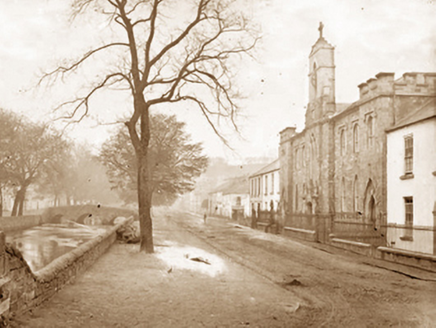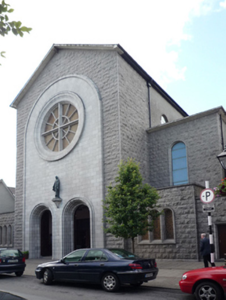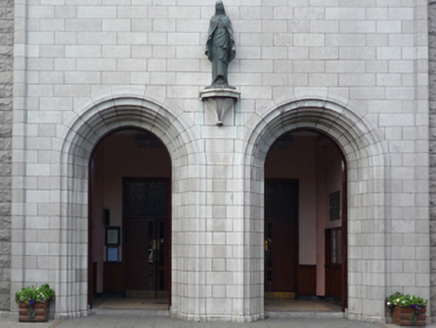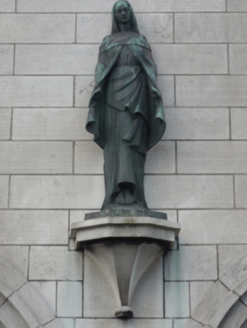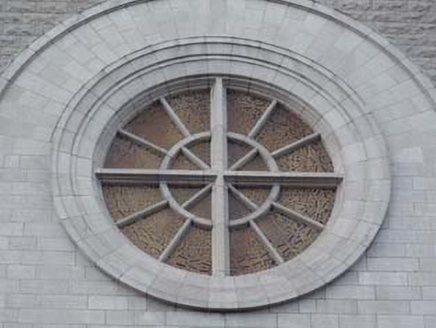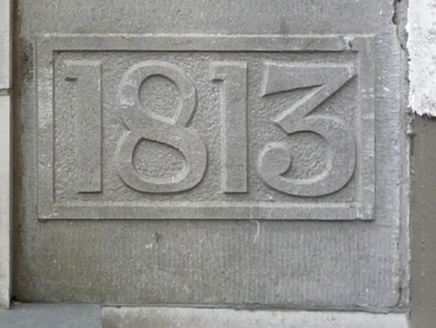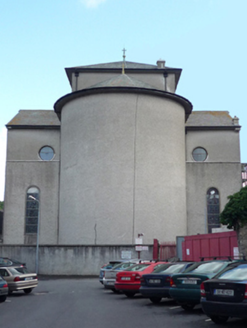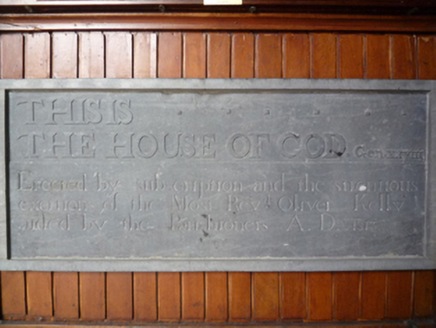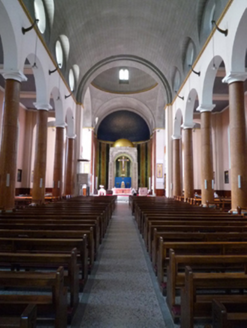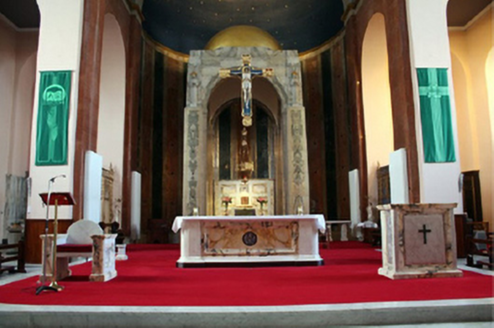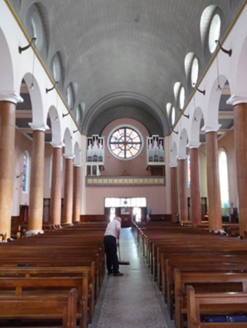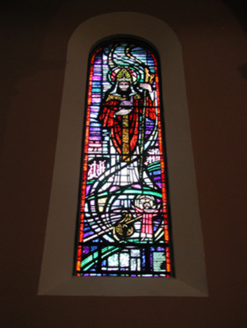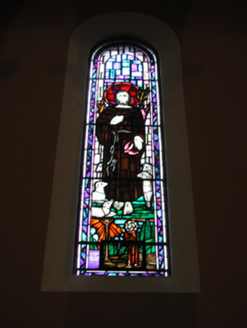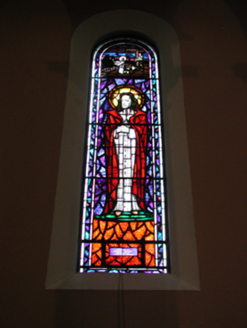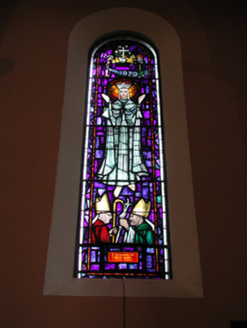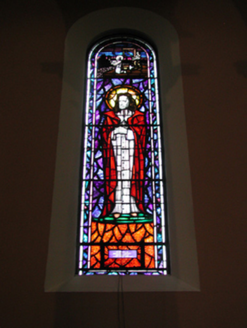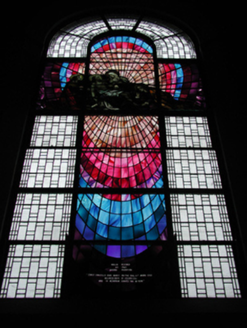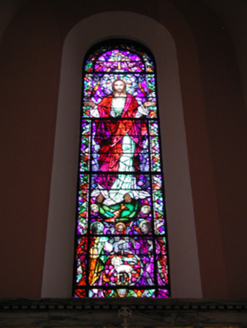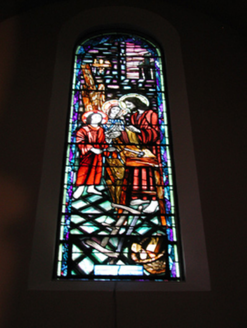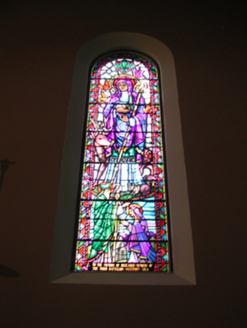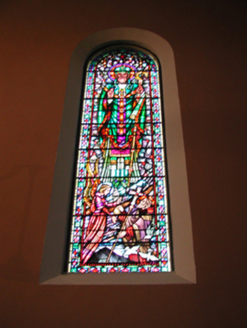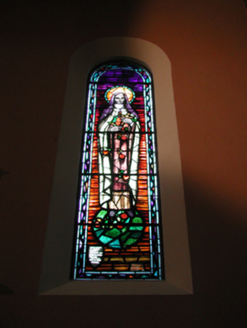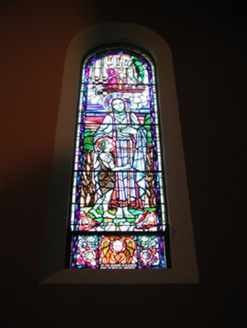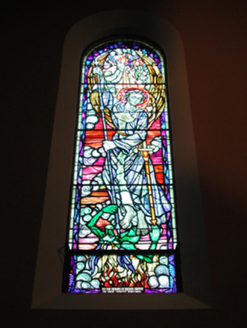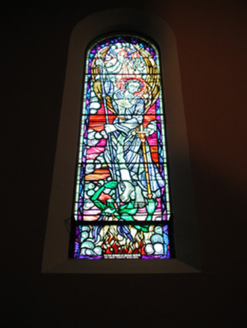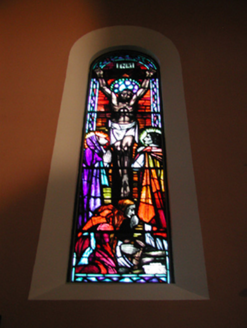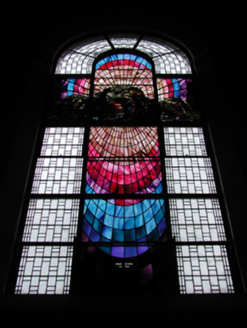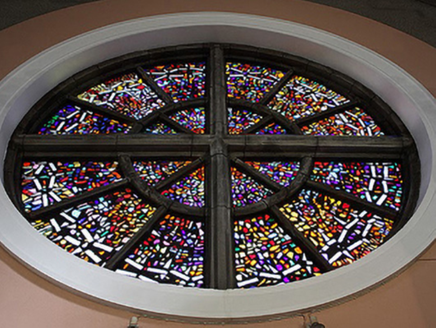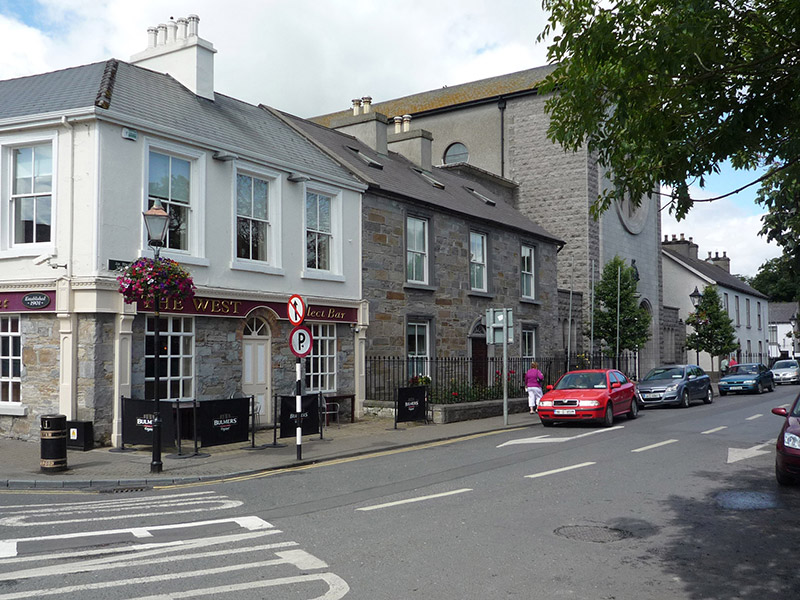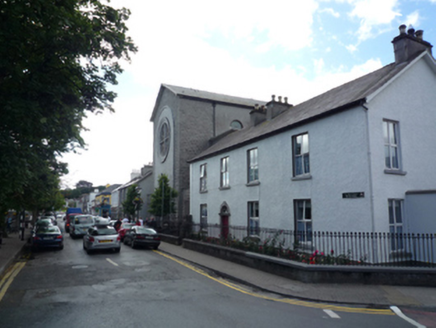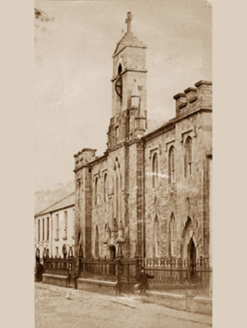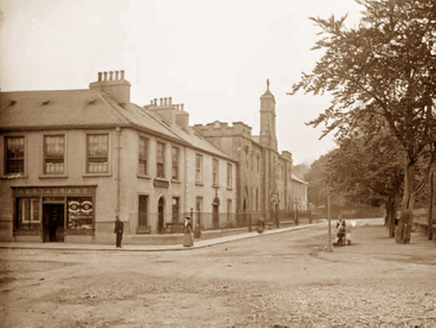Survey Data
Reg No
31212068
Rating
Regional
Categories of Special Interest
Architectural, Artistic, Historical, Social, Technical
Original Use
Church/chapel
In Use As
Church/chapel
Date
1925 - 1965
Coordinates
99740, 284483
Date Recorded
31/07/2008
Date Updated
--/--/--
Description
Detached nine-bay double-height Catholic church, built 1926-32; dedicated 1932, on a cruciform plan comprising seven-bay double-height nave opening into six-bay double-height flat-roofed side aisles; single-bay (single-bay deep) double-height transepts centred on single-bay double-height tower (crossing) on a square plan opening into single-bay double-height apse (south). Completed, 1957-61, producing present composition. Renovated, 1973, with sanctuary reordered. Pitched slate roofs on a cruciform plan centred on pyramidal slate roof (tower); half-conical slate roof (south), clay ridge tiles, and cast-iron rainwater goods on slightly overhanging eaves retaining cast-iron square profile hoppers and downpipes. Drag edged rock faced limestone ashlar walls to entrance (north) front on cut-limestone chamfered plinth with limestone ashlar frontispiece in cut-limestone frame; roughcast surface finish (remainder) bellcast over rendered plinth. Round windows (clerestorey) with rendered "bas-relief" surrounds framing storm glazing over fixed-pane fittings having square glazing bars. Round-headed window openings (side aisles) with concrete sills, and rendered "bas-relief" surrounds framing storm glazing over fixed-pane fittings having leaded stained glass panels. Round-headed window openings (transepts) with concrete sills, and rendered "bas-relief" surrounds framing storm glazing over fixed-pane fittings having leaded stained glass panels. Pair of round-headed door openings to entrance (north) front with cut-limestone surrounds having stepped reveals framing timber panelled double doors. "Wheel Window" (gable) with cut-limestone surround having stepped reveals framing fixed-pane fittings having stained glass panels. Interior including vestibule (north) with reclaimed cut-limestone date stone ("1813"); paired square-headed door openings into nave with glazed timber panelled double doors having overlights; full-height interior with organ gallery (north) supporting pipe organ below stained glass "Wheel Window" (1960), terrazzo central aisle between cruciform-detailed timber pews, round-headed arcades on polished red Verona marble pillars on cut-veined grey marble plinths with barrel vaulted ceiling on cornice, round-headed chancel arch framing carpeted cut-veined white marble stepped dais to sanctuary (south) reordered, 1973, with cut-veined white marble panelled altar below inlaid cut-veined white marble "baldacchino", cut-veined white marble stepped daises to side altars with Gothic-style altars below stained glass memorial windows (1948-1981), timber boarded wainscoting (side aisles) with carved timber dado rail, and "Opus Sectile" stations (1929-31) below stained glass memorial windows (1950-1979). Street fronted with concrete flagged footpath to front.
Appraisal
A church erected to designs by Rudolph Maximilian Butler (1872-1943) of Kildare Street, Dublin (Irish Builder 1st April 1926, 261; 16th April 1927, 282), representing an important component of the twentieth-century built heritage of County Mayo with the architectural value of the composition confirmed by such attributes as the cruciform plan form; and the slender profile of the openings underpinning a streamlined Romanesque theme: meanwhile, aspects of the composition, in particular the "Wheel Window"-detailed frontispiece, clearly illustrate the belated completion of the church to designs by James Rupert Edward Boyd Barret (c.1904-76) with those works recalling his contemporary Catholic Church of the Descent of the Holy Ghost (1956-60) in County Cork (Irish Builder 14th June 1958, 439; 30th September 1961, 765). Having been well maintained, the form and massing survive intact together with substantial quantities of the original fabric, both to the exterior and to the arcaded interior reordered (1973) in accordance with the liturgical reforms sanctioned by the Second Ecumenical Council of the Vatican (1962-5) where contemporary joinery; an eye-catching "baldacchino"; opus sectile stations by Hubert McGoldrick (1897-1967) of An Túr Gloine (opened 1903), Dublin; and vibrant stained glass supplied by Earley Studios Limited (closed 1975) of Dublin; Harry Clarke Stained Glass Studios (closed 1973) of Dublin; George Campbell RHA (1917-79) of Belfast and Span; Patrick Pye RHA (1929-2018) of Dublin; and George Walsh (b. 1939) of Dublin, all highlight the considerable artistic potential of a church making an imposing visual statement overlooking the canalised Westport or Carrowbeg River: meanwhile, a reclaimed date stone ("1813") survives as an interesting relic of the Georgian Gothic church 'Erected by subscription and the strenuous exertions of the Most Revd. Oliver Kelly [1777-1834] aided by the Parishioners' which in retrospect was unjustly maligned as 'a large, lumpish, tasteless structure' (Parliamentary Gazetteer of Ireland 1846 III, 521).
